The models listed below are developed by our group and/or collaborators (Dr. Guoliang Shi and Dr. Yinchang Feng) at Nankai University (http://env.nankai.edu.cn/air/). These receptor models are designed for source apportionment of particulate matter. Please feel free to download, but the authors accept no legal liability for their use.
Models
- CMB-GC1.0 (Chemcial Mass Balance-Gas Constraint)
This is an extension to the more traditional CMB model and can be applied to estimate the contribution of sources to particulate matter, using gas phase concentrations to set additional constraints.
Download: CMB-GC%201.0.zip
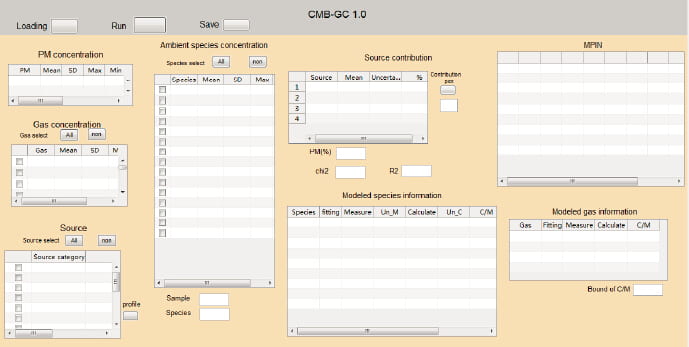
- CMBGC-Iteration 1.0 (Chemcial Mass Balance Gas Constraint- Iteration)
This is an extension to the more traditional CMB model and can be applied to estimate the contribution of sources to particulate matter, using gas phase species concentration constraints. In this model, the uncertainties of ambient dataset and source profiles are involved in the iterative solution.
Download: CMBGC-Iteration.zip
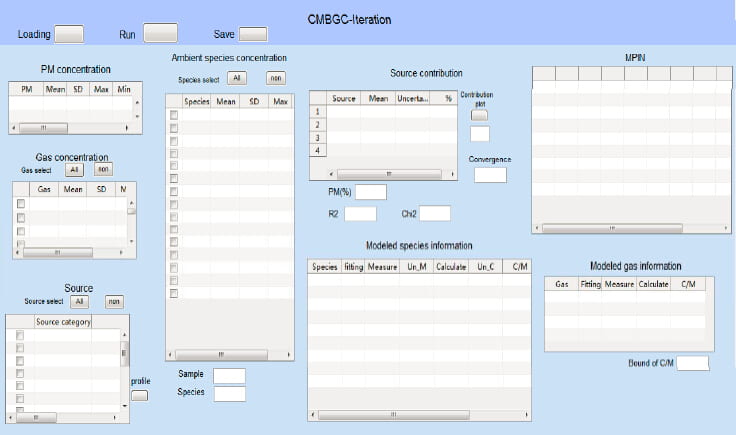
- NCAPCA 1.0 (Non‐negative Constrained Absolute Principle Component Analysis)
This is a factor analytic approach and can be applied to estimate the contribution of sources to particulate matter, based on the PCA method. Non-negative contributions are obtained.
Download: NCAPCA.zip
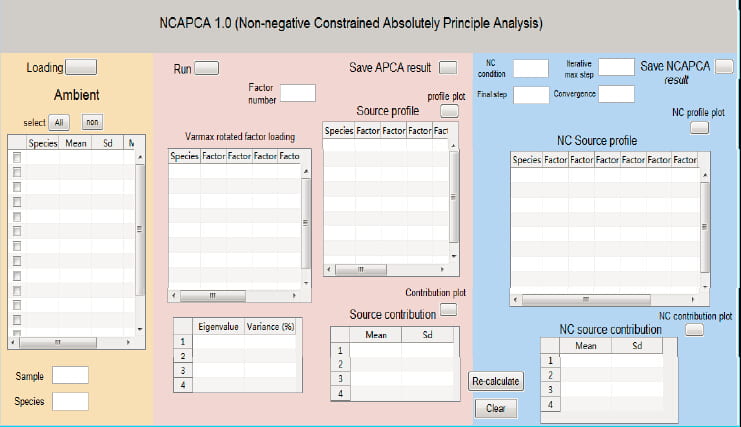
- WALSPMF 1.0 (Weighted Alternating Least Squares‐Positive Matrix Factorization)
This is an extension to the more traditional PMF model and can be applied to estimate the contributions of sources to particulate matter, based on the Weighted Alternating Least Squares and Positive Matrix Factorization method.
Download: WALSPMF.zip

- CMB-Iteration 1.0 (SOC) (Chemical mass balance‐Iteration SOC estimation)
This is an extension to the more traditional CMB model and can be applied to estimate the concentrations of SOC and contribution of the sources.
Download: CMBI%28SOC%29.zip
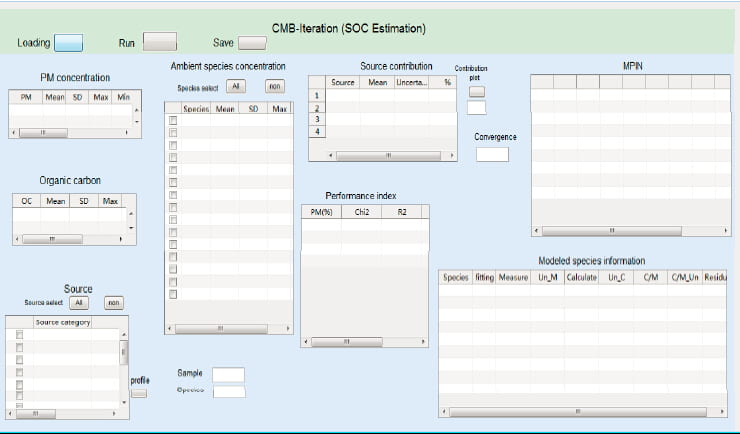
- Three-dimensional WFA 1.0 (Three-dimensional weighted factor model)
This is a three-dimensional weighted factor model and can be applied to estimate the contribution of sources to particulate matter, for analyzing the multi-site data.
Download: WFA3.zip
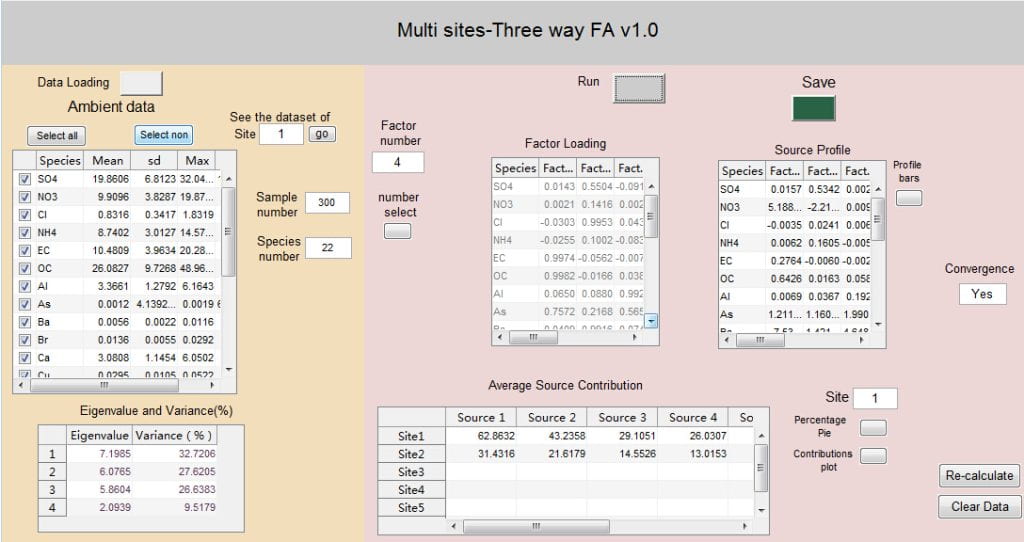
- SSAPO 1.0 (Simultaneous Source Apportionment with Profile Optimization model)
This is a simultaneous source apportionment with profile optimization model and can generated new local source profiles, based on the reference (original) profile and local ambient dataset. The simulated (new) profile can be more compatible for local areas, comparing with the reference profile.
Download: SSAPO.zip

User Guide
CMB-GC CMB-GC%201.0%20User%20Guide.pdf
CMBGC-Iteration CMBGC-Iteration%201.0%20User%20Guide.pdf
NCAPCA NCAPCA%20User%20Guide.pdf
WALSPMF WALSPMF%20User%20Guide.pdf
CMB-Iteration (SOC) CMB-Iteration%20%28SOC%29%201.0%20User%20Guide.pdf
Three-dimensional WFA WFA3%20User%20Guide.pdf
SSAPO SSAPO%201.0%20User%20Guide.pdf
Documents
- Shi, G.L.*, Xu, J., Peng, X., Xiao, Z.M., Chen, K., Tian, Y.Z., Guan, X.B., Feng, Y.C., Yu, H.F., Nenes, A., Russell, A.G*. pH of Aerosols in a Polluted Atmosphere: Source Contributions to Highly Acidic Aerosol. Environmental Science & Technology, 2017, 51, 4289−4296.
- Shi, G.L., Peng, X., Huangfu, Y.Q., Wang, W., Xu, J., Tian, Y.Z., Feng, Y.C.*, Ivey, C.E., Russell, A.G. Quantification of source impact to PM using three-dimensional weighted factor model analysis on multi-site data. Atmospheric Environment, 2017, 160, 89-96.
- Shi, G.L., Xu, J., Peng, X., Tian, Y.Z., Wang, W., Han, B., Zhang, Y.F., Feng, Y.C., Russell, A.G. Using a new WALSPMF model to quantify the source contributions to PM2.5 at a harbour site in China. Atmos. Environ. 2016, 126, 66‐75. http://www.sciencedirect.com/science/article/pii/S1352231015305537/pdfft…
- Maier, M.L., Balachandran, S., Sarnat, S.E., Turner, J.R., Mulholland, J.A., Russell, A.G. Application of an Ensemble‐Trained Source Apportionment Approach at a Site Impacted by Multiple Point Sources. Environ. Sci. Technol. 2013, 47, 3743−3751. http://pubs.acs.org/doi/pdfplus/10.1021/es304255u
- Marmur, A., Unal, A., Mulholland, J.A., Russell, A.G. Optimization‐Based Source Apportionment of PM2.5 Incorporating Gas‐to‐Particle Ratios. Environ. Sci. Technol. 2005, 39, 3245‐3254. http://pubs.acs.org/doi/pdfplus/10.1021/es0490121
